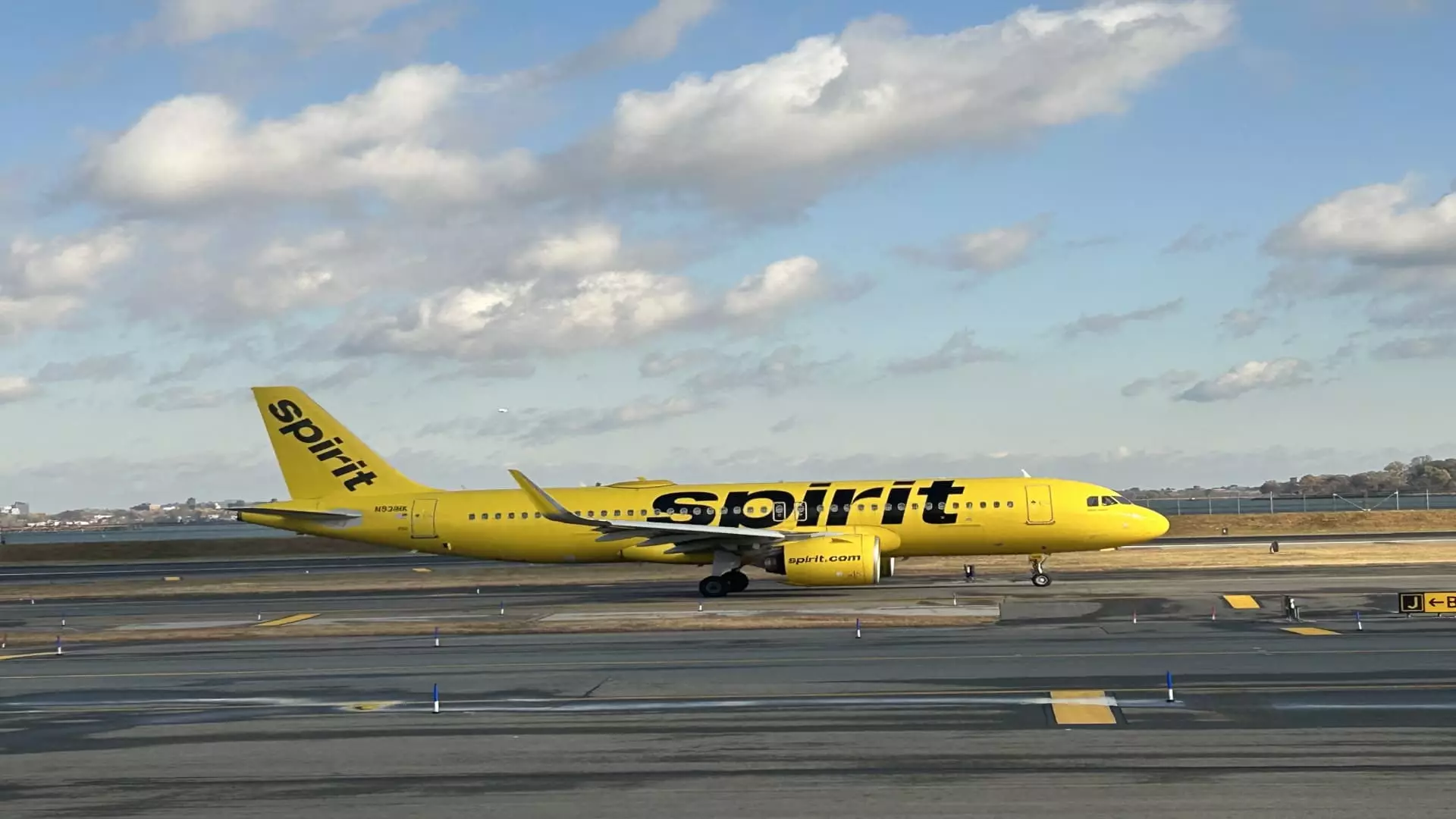Spirit Airlines, a prominent player in the budget airline sector, finds itself in troubled waters as it grapples with significant financial challenges. Following its Chapter 11 bankruptcy filing in November, the airline has announced a substantial reduction in its workforce, cutting roughly 200 positions across various departments. This strategic decision is part of a broader initiative aimed at cost reduction and operational realignment to match its current capabilities and market demands.
In a statement provided to CNBC, Spirit Airlines detailed its commitment to streamlining operations as a means to adapt to its downsized fleet and altered flying schedule. The company emphasized the necessity of these layoffs, particularly focusing on non-union roles, amidst a backdrop of nearly 13,000 employees, a significant majority of whom are unionized. The job cuts represent an essential measure to stabilize the organization financially, following the aviation industry’s turbulent recovery path post-pandemic.
Prior to these layoffs, Spirit had already implemented several cost-cutting measures. The airline’s management had furloughed numerous pilots and encouraged flight attendants to take voluntary leaves. These actions were part of an overarching strategy to mitigate financial losses during an unprecedented period in the airline’s history. Additionally, Spirit has scaled back its flight network and sold off some aircraft, specifically Airbus jetliners, to generate necessary capital.
Spirit’s recent struggles can be traced back to the blocking of its proposed merger with JetBlue, which was denied by a federal court due to antitrust concerns. This setback has compounded existing issues, including a that affected the airline’s operational reliability—stemming from a Pratt & Whitney engine recall—and a sharp rise in labor costs. With these external pressures, Spirit remains in a precarious position as it strives for recovery.
The airline has articulated its goal of achieving annualized cost reductions of $80 million, which is partly facilitated by the recent layoffs and furloughs. However, the process of reducing workforce numbers is fraught with emotional and ethical challenges. Spirit has expressed its intent to handle the situation with care, pledging to minimize the impact on affected employees while maintaining transparency throughout the restructuring process.
As Spirit Airlines anticipates a move out of bankruptcy within the current quarter, the road to recovery appears challenging yet viable. The airline must not only navigate the immediate ramifications of job cuts but also work diligently to restore its service levels and stakeholder confidence. The strategy of optimizing operations in light of a reduced market footprint could prove critical in determining the airline’s future in an increasingly competitive landscape. While the path forward is littered with obstacles, strategic focus on operational efficiency may offer Spirit Airlines a chance for renewal amidst the turbulence of the aviation industry.

